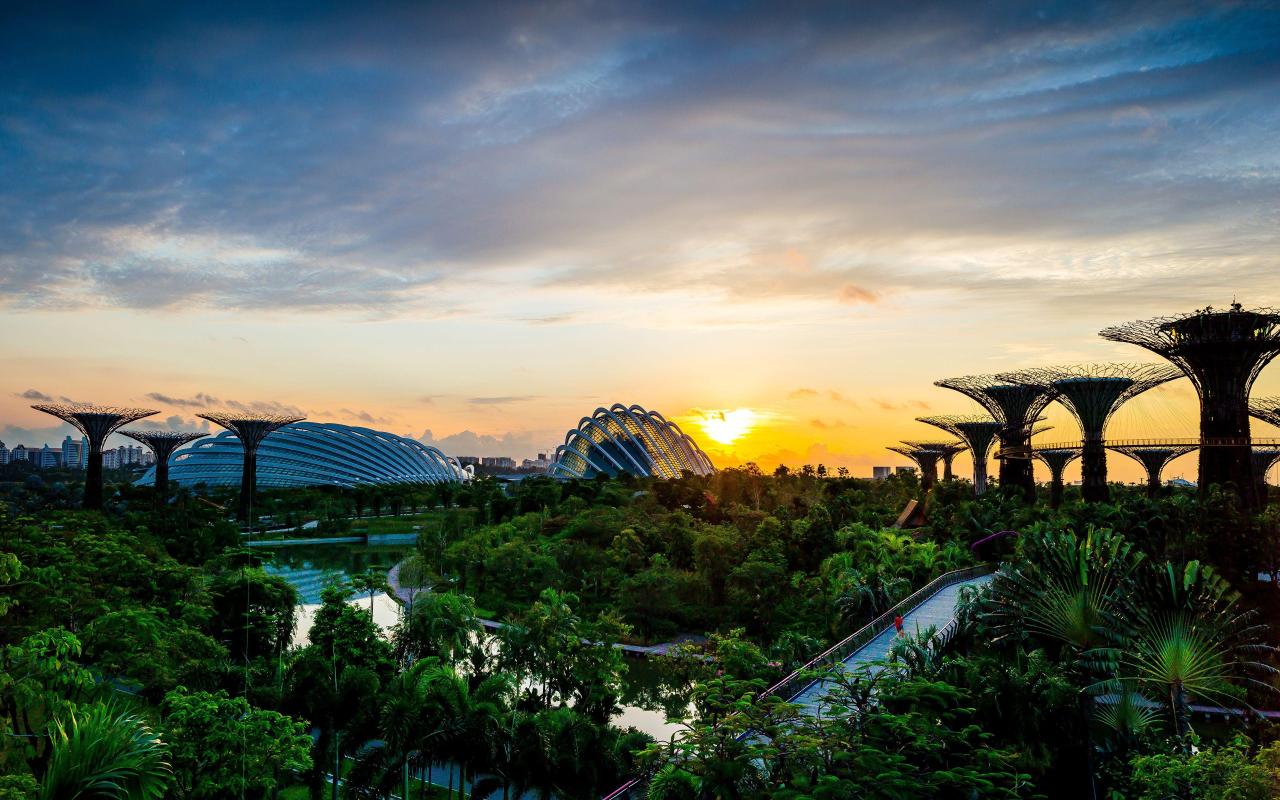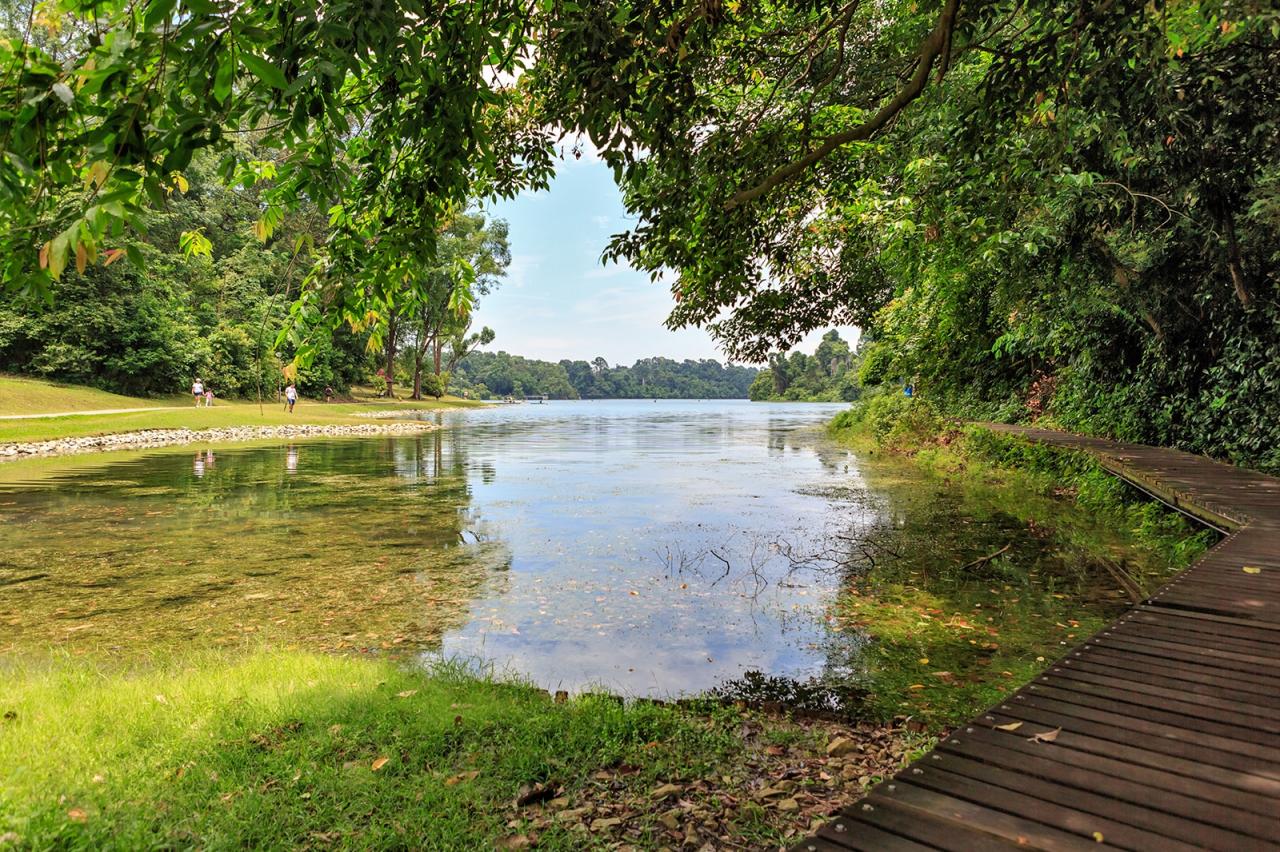Singapore Nature Reserves are vital green lungs within a bustling metropolis, showcasing incredible biodiversity despite the island’s small size. These reserves aren’t just pockets of wilderness; they’re crucial for maintaining ecological balance, offering essential ecosystem services, and providing recreational opportunities for Singaporeans. From the lush rainforests of Bukit Timah to the unique wetlands of Sungei Buloh, each reserve plays a distinct role in the island’s natural heritage.
This exploration delves into the rich flora and fauna found within these protected areas, highlighting conservation efforts and the challenges they face. We’ll examine the ecological importance of these reserves, their recreational value, and explore the future of conservation in Singapore’s urban landscape. Understanding these aspects is key to appreciating their significance and ensuring their continued survival for generations to come.
Singapore’s nature reserves offer amazing wildlife viewing opportunities! After a day exploring the lush greenery and diverse ecosystems, you might want to unwind at a nearby resort. Check out some great options using this handy site to find resorts near me , then head back to the reserves for an evening stroll and perhaps catch a glimpse of nocturnal animals.
It’s the perfect blend of adventure and relaxation!
Singapore Nature Reserves: A Biodiversity Hotspot
Singapore, despite its small size, boasts a remarkable array of natural habitats and biodiversity, largely concentrated within its network of nature reserves. These reserves play a crucial role in maintaining ecological balance, providing recreational opportunities, and fostering environmental education. This article explores the multifaceted aspects of Singapore’s nature reserves, examining their biodiversity, ecological importance, recreational value, challenges, and future prospects.
Biodiversity of Singapore Nature Reserves
Singapore’s nature reserves are home to a surprisingly diverse range of flora and fauna. Bukit Timah Nature Reserve, for instance, is renowned for its primary rainforest, harbouring a significant number of endemic plant and animal species. Sungei Buloh Wetland Reserve, on the other hand, showcases a different ecological landscape, supporting a rich community of migratory birds and mangrove-dependent species.
The differences in habitat types lead to distinct biodiversity profiles across these reserves. Conservation efforts, including habitat restoration and invasive species control, are actively implemented to protect this biodiversity.
| Reserve Name | Species | Population Estimate | Conservation Status |
|---|---|---|---|
| Bukit Timah Nature Reserve | Raffles’ Banded Langur | ~50-70 individuals | Vulnerable |
| Bukit Timah Nature Reserve | Tembeling (Shorea leprosula) | Abundant (exact numbers difficult to estimate) | Least Concern (but habitat loss is a threat) |
| Sungei Buloh Wetland Reserve | Mudskippers | Large populations (difficult to quantify precisely) | Least Concern (but habitat degradation is a threat) |
| Sungei Buloh Wetland Reserve | Greater Painted-snipe | Variable, depending on migratory season | Least Concern (globally; local population fluctuates) |
Ecological Importance of Singapore Nature Reserves
Singapore’s nature reserves act as vital green lungs within the densely urbanized landscape. They play a significant role in carbon sequestration, mitigating the effects of climate change and improving air quality. The reserves also contribute to water purification and flood control, providing essential ecosystem services that benefit the entire island.
- Rainforest: Supports high biodiversity, carbon sequestration, and nutrient cycling.
- Mangrove: Provides coastal protection, acts as a nursery for marine life, and filters pollutants.
- Wetland: Filters water, supports diverse birdlife, and mitigates flood risk.
Recreational and Educational Aspects of Singapore Nature Reserves
Singapore’s nature reserves offer a wealth of recreational opportunities, including hiking, birdwatching, nature photography, and guided nature walks. Numerous educational programs and initiatives are available to raise public awareness about conservation and the importance of biodiversity. Visitor centers, well-maintained trails, and interactive exhibits enhance the visitor experience.
- Websites: National Parks Board website, nature societies’ websites.
- Publications: Nature guides, research papers, educational brochures.
- Guided Tours: Organized tours offered by various nature organizations.
Challenges and Threats to Singapore Nature Reserves

Singapore’s nature reserves face various challenges, including habitat loss due to urbanization, the spread of invasive species, and pollution. Urban encroachment continues to pose a significant threat to the integrity of these reserves. Strategies to mitigate these threats include habitat restoration, invasive species management, and public education campaigns.
The continued existence of Singapore’s nature reserves hinges on a concerted effort to address the challenges of urbanization, invasive species, and pollution. Sustained conservation efforts are crucial for preserving their ecological integrity and biodiversity for future generations.
Future of Singapore Nature Reserves
Looking ahead, Singapore’s nature reserves will need to adapt to the impacts of climate change and population growth. Innovative urban planning approaches that integrate nature reserves into the city fabric will be essential. Learning from successful conservation initiatives in other countries can provide valuable insights and inspire innovative strategies for the long-term sustainability of these precious green spaces.
Last Recap: Singapore Nature Reserve

Singapore’s nature reserves are more than just parks; they’re vital ecosystems that contribute significantly to the island’s well-being. Balancing the needs of a growing population with the preservation of these precious green spaces requires innovative strategies and ongoing commitment. By understanding the challenges and celebrating the successes, we can work towards a future where Singapore’s natural heritage thrives alongside its urban development, ensuring a sustainable and enriching environment for all.
FAQ Summary
What are the best times to visit Singapore’s nature reserves?
Early mornings and late afternoons are generally best to avoid the midday heat and crowds. Check weather forecasts before you go.
Are there entry fees for the nature reserves?
Most nature reserves have free entry, but some may charge for specific activities or guided tours.
Singapore’s nature reserves offer amazing biodiversity, a welcome escape from the city buzz. But if you’re craving some sun and sand after exploring the wildlife, check out the stunning beaches nearby – you can find some great options listed on this helpful site: best beaches near singapore. Then, recharge and head back to the tranquility of Singapore’s nature reserves, feeling refreshed and ready for more exploration!
Are pets allowed in Singapore’s nature reserves?
Generally, pets are not allowed in Singapore’s nature reserves to protect the wildlife. Check individual reserve regulations for exceptions.
What should I bring when visiting a nature reserve?
Wear comfortable shoes, bring water, insect repellent, sunscreen, and a hat. A camera and binoculars are also recommended.